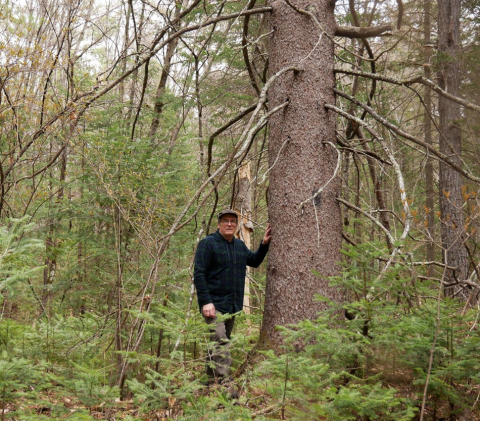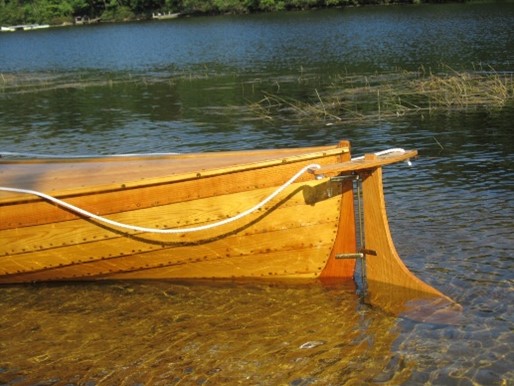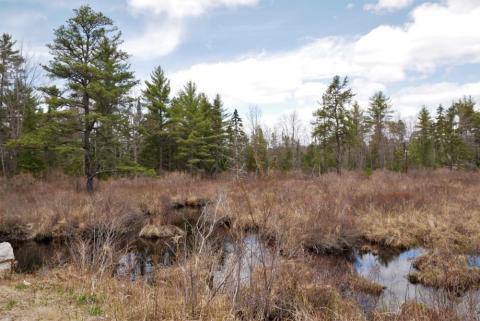The Tamarack (Larix laricina)
The following is the second of two excerpts from Kevin Martin's new book, Big Trees of Northern New England, scheduled for publication in May 2022. If you want to read the first installment, click here.
My journeys to find tamarack in the woods most often bring me to the wilder and wetter parts of the forest where you will see different trees such as black spruce and maybe some pitch pine or white cedar.
Tamarack is a pleasing tree in the wild; it's a pleasure to come across a grove of younger tamarack while hiking the northern woods. The needles can be bright green in the spring and golden yellow in the fall. Larger trees are not as good looking because they regularly have many dead lower branches and those pleasing needles are way up top and out of sight.

At many times of the year, you will think the tree is dead. This is one of the few conifers that loses its needles in the winter so will be completely bare then. The bark has a unique look as its broken into many small reddish-brown scales that make it look similar to some spruce types.
The tamarack’s other names include hackmatack and eastern larch. As lumber, it is a resinous wood that makes it durable in contact with the soil or water, a characteristic that makes boat builders seek it out for use in their crafts. It can also be used for posts and poles set in the ground. The wood has a slight orange tinge and I have used the curved root and trunk slabs to make stems for lapstrake boats and canoes. Its pleasing to work as you can chisel out rabbets easily and it feels smooth when planed to a fine finish. Linseed oil and varnish is added to take on the same sheen that you may see in the live tree with its fall needles glowing in the sunlight.

In the Pine River State Forest (Ossipee and Effingham, NH), you will see this tree is unique for where it is situated in this part of the state. The lakes nearby have crystal clear water with that fine, white sand showing throughout, making the land around them sought after for summer camps. This sand is perfect for growing pine trees and after the fires that went through here in the 1940’s the red pine and pitch pine have become prevalent. The 3244 acres state forest is managed with frequent cuttings giving some of the forest an open park like appearance.
Pine river flows through much of the flat land here and several brooks feed into it. There are areas around the brooks that hold other types of conifers and give a special feel to this state park. Wilkinson Brook comes off Green Mountain in Effingham, then flows through the state forest before it empties into the Pine River. I stopped briefly at the entrance to the state forest near Hutchins Pond and it looks like a great place to explore further.

The best way to see the tamarack is to drive to Wilkinson Swamp Road and park in the pullover just shy of the bridge over Wilkinson brook. Walk down the snowmobile trail to a small brook crossing and go east to find the tree. It’s about 200 feet from the trail - N 43.71558 W 071.03912.
Keep a lookout for the tree with the spruce-like bark as it is easy to miss. The needles are not really visible so ID it by its bark and dead lower branches. While not quite the size of our former national champion that is on the edge of an opening by a house, this is 3rd largest in the state and is much more pleasurable to visit in the woods of NH.
Circumference at Breast Height: 83.5” Vertical Height: 85’ Average Crown Spread: 34’ Total Points 177 Fair Condition
Resources:
- See how connections with people and trees live on in many different ways in Kevin's The Tamarack Story.
- Download a list of other NH Champion Trees
- Purchase the book, Big Trees of New Hampshire, by Kevin Martin
Kevin Martin is an expert wooden boat and canoe maker, Rockingham County Coordinator for the NH Big Tree program, and UNH Extension NH Big Tree volunteer. His first book, Big Trees of New Hampshire, directs readers on 28 hikes to find 85 of the largest trees that are on public land or in the cities where the public can see them up close.